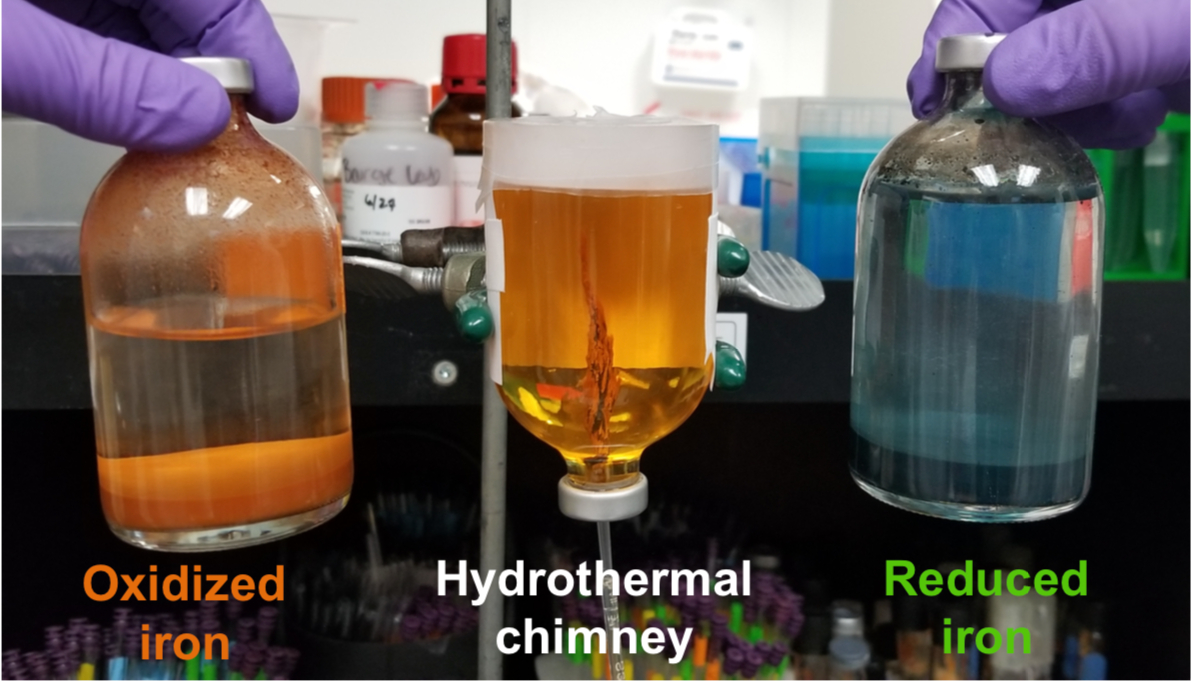-
Redox and pH gradients drive amino acid synthesis in iron oxyhydroxide mineral systems
April 18, 2019 / Written by: Laura Barge et al.
Image credit: L. Barge / NASA JPLResearchers from the NAI JPL Icy Worlds team report that gradients of redox and pH in iron minerals can drive the formation of prebiotic organic molecules.
The early Earth had no atmospheric O2 – which resulted in an ocean where iron could remain dissolved in the ocean and precipitate as highly reactive minerals. These iron hydroxides in seafloor sediments and hydrothermal chimneys range from more oxidized (red rust) to more reduced (green rust) – each having different ability to catalyze organic prebiotic reactions, and form amino acids.
Amino acids only form when the mineral contains both oxidized and reduced iron, and when the surrounding solution is alkaline.
Simple organic precursors (in this case, pyruvate) can react with iron minerals and ammonia to make the building blocks of life, such as the amino acid alanine, as well as the reduced product, lactate. The maximum yield of alanine was observed at 50% Fe(II), under alkaline conditions, and at moderately warm temperatures. These represent conditions that may be found, for example, in iron-containing sediments near an alkaline hydrothermal vent system.
Liquid-phase products of such prebiotic chemistry would be able to diffuse to other conditions within the sediment column to participate in further reactions. It also suggests that geochemical gradients in vent environments can drive product selectivity for prebiotic chemistry, perhaps leading to more complex organic reaction systems as these molecules continue to diffuse and react under different conditions within the gradients.
Partially oxidized iron minerals yield abiotic amino acid formation.
This reaction could occur on iron-rich early Earth seafloors, in vents, and also in any planetary environment where similar iron minerals may occur – such as Enceladus, Europa, or the subsurface of Mars.
The paper “Redox and pH gradients drive amino acid synthesis in iron oxydydroxide mineral systems” is published in PNAS.

Source: [PNAS]
- The NASA Astrobiology Institute Concludes Its 20-year Tenure
- Global Geomorphologic Map of Titan
- Molecular Cousins Discovered on Titan
- Interdisciplinary Consortia for Astrobiology Research (ICAR)
- The NASA Astrobiology Science Forum Talks Now on YouTube
- The NASA Astrobiology Science Forum: The Origin, Evolution, Distribution and Future of Astrobiology
- Alternative Earths
- Drilling for Rock-Powered Life
- Imagining a Living Universe
- Workshops Without Walls: Astrovirology